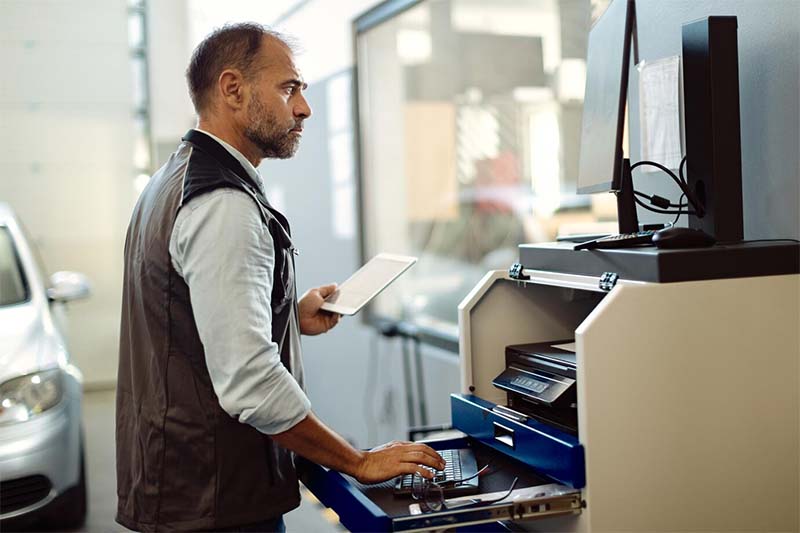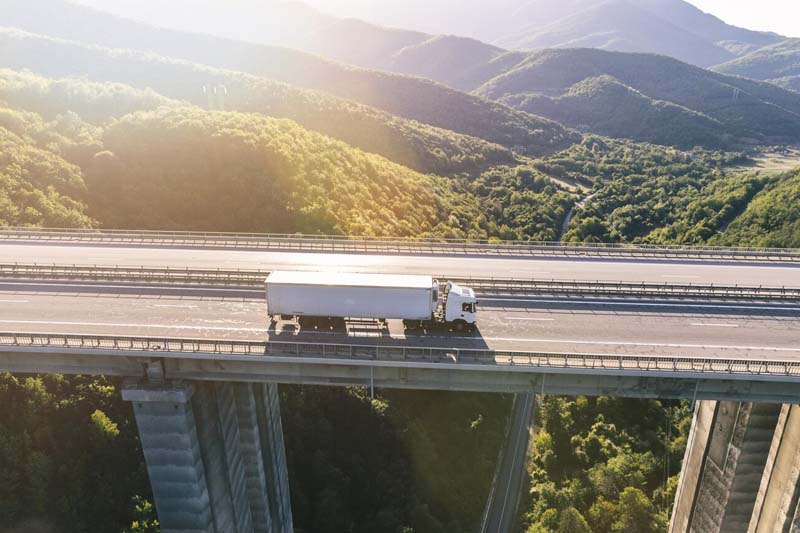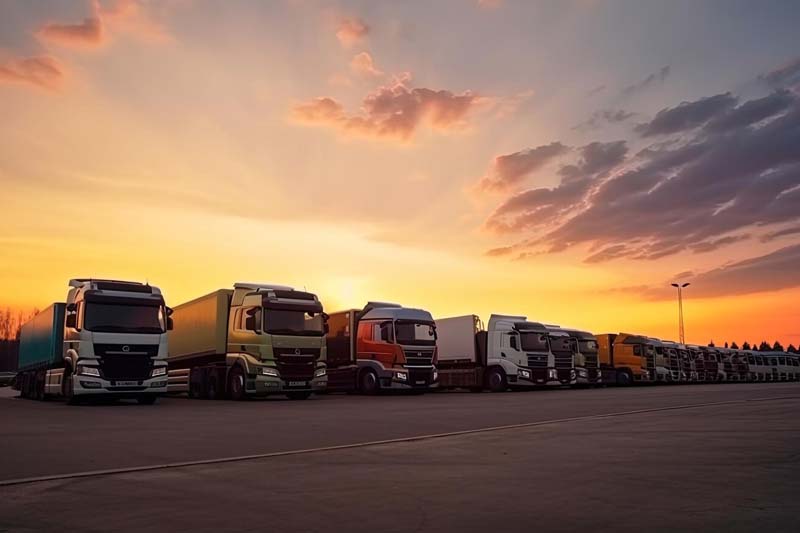Small industrial computers may not grab headlines, but they’re playing a starring role in the transportation industry’s future. These compact, robust computing marvels are the gears and cogs behind the scenes, making transportation smarter, safer, and more connected. They’re the unsung heroes that deserve our attention, and by the end of this blog, you’ll see just how essential they are to the transportation revolution.

Understanding Small Industrial Computers
Definition and Characteristics of Small Industrial Computers
Small industrial computers are the unsung heroes of modern technology, often working silently behind the scenes. These compact devices are purpose-built for demanding industrial environments. Think of Industrial Panel PCs as the Swiss Army knives of computing, designed to withstand harsh conditions, extreme temperatures, and rigorous workloads. They’re compact in size but mighty in performance, with features like rugged casings, fanless designs, and low power consumption, making Industrial Panel PCs versatile and dependable for a wide range of applications.

Their Significance in Various Industries, Including Transportation
Small industrial computers play a pivotal role in a plethora of industries, and transportation is no exception. From manufacturing plants to healthcare facilities, these devices are the backbone of automation, data processing, and control systems. In the world of transportation, they’re the driving force behind smart cities, enabling traffic management, monitoring public transportation, and even powering the brains of autonomous vehicles. The significance of small industrial computers lies in their ability to enhance efficiency, safety, and reliability across diverse sectors, ultimately shaping the future of our daily lives. In this blog, we’ll take a closer look at their impact on the transportation industry and explore the exciting possibilities they bring to the table.
The Current State of Transportation Technology
Overview of Current Transportation Systems and Technologies
Our world is in motion, and at the heart of this constant movement are today’s transportation systems and the cutting-edge technologies that power them. From city buses to long-haul flights, transportation today is a marvel of modern engineering. We’re witnessing an era of innovation where traditional modes of transport are converging with digital advancements. Smart cities are using real-time data to optimize traffic flow, while electric and autonomous vehicles are changing the way we think about mobility. Public transportation is becoming more connected, convenient, and environmentally friendly, thanks to ongoing technological advances.

Challenges and Limitations in Today’s Transportation Systems
However, alongside these exciting advances, today’s transportation systems face a host of challenges and limitations. Traffic congestion, pollution, and outdated infrastructure remain significant problems in urban areas. Safety concerns, especially in the context of autonomous vehicles, raise important questions about liability and regulation. The privacy and security of personal data in connected transportation systems are also hot topics in the tech world. In this blog, we’ll delve into both the impressive advancements and the hurdles that the transportation industry faces, examining how small industrial computers are contributing to solutions for these challenges and driving the future of transport.
The Role of Small Industrial Computers in Transportation
How Small Industrial Computers Are Transforming Transportation
In a world where mobility is key, small industrial computers are quietly but profoundly revolutionizing the way we move from place to place. These unassuming powerhouses are at the forefront of a transportation renaissance. By seamlessly connecting the physical and digital worlds, they’re driving efficiency, safety, and sustainability to new heights. From traffic management to vehicle control, they’re the brains behind the transformation of transportation as we know it. In this section, we’ll uncover how small industrial computers are making our journeys more seamless, smarter, and safer.
Examples of Applications and Use Cases in the Transportation Industry
The proof is in the pudding, or in this case, the applications and use cases. Small industrial computers are working their magic in a myriad of ways across the transportation sector. Picture this: smart traffic lights that adjust to traffic patterns in real time, reducing congestion and emissions. Or think of public transportation systems that use data analytics to predict and prevent maintenance issues before they cause delays. And for the automotive aficionados, autonomous vehicles that rely on small industrial computers for instant decision-making and route optimization. These are just a few of the countless applications reshaping the way we travel. In the following paragraphs, we’ll delve into these real-world examples, showcasing how small industrial computers are the unsung heroes of our daily commute and long-distance journeys.
Benefits of Small Industrial Computers in Transportation
Increased Efficiency and Productivity
Small industrial computers are the unsung champions of efficiency in the world of transportation. Their ability to process vast amounts of data in real time enables traffic management systems to optimize routes, reduce congestion, and improve the overall flow of vehicles. This not only saves precious time for commuters but also enhances the productivity of transportation networks. Moreover, these small devices are essential for streamlining logistics and managing fleets, ensuring that goods are delivered more efficiently, ultimately contributing to a more productive and interconnected world.
Enhanced Safety and Security
Safety is paramount in transportation, and small industrial computers are the silent guardians that make it possible. These devices power advanced driver assistance systems (ADAS) in vehicles, providing features like collision avoidance and lane-keeping assistance. They also support surveillance and security systems, helping to monitor public transportation and roadways, making them safer for all. Small industrial computers are a cornerstone of the evolving safety and security landscape in the transportation sector, assuring passengers and cargo reach their destinations with the utmost protection.
Cost Savings and Sustainability
In a world where environmental concerns and economic sustainability are paramount, small industrial computers are leading the charge. By optimizing routes and traffic flow, they reduce fuel consumption and emissions, contributing to a greener, more sustainable planet. These devices also help minimize maintenance costs by enabling predictive maintenance, which prevents breakdowns and extends the lifespan of transportation assets. The cost savings achieved through these technologies benefit not only transportation companies but also the end-users, who enjoy more affordable and eco-friendly travel options. In this section, we’ll delve into each of these benefits, exploring how small industrial computers are making transportation more efficient, secure, and cost-effective.
The Future Outlook
Predictions and Trends in Transportation Technology
The road ahead for transportation technology is an exciting one, filled with innovation and transformative trends. As our cities grow more connected, the transportation industry is set to undergo a profound shift.
We’ll explore the rising popularity of electric and autonomous vehicles, the expansion of smart cities, and the integration of 5G and IoT technology for seamless and efficient transport. We’ll also delve into sustainability and how eco-friendly transportation options will become more mainstream, driven by both environmental concerns and changing consumer preferences. The future of transportation technology is a thrilling one, and in this section, we’ll paint a picture of what to expect.
How Small Industrial Computers Will Continue to Shape the Future
Small industrial computers are poised to remain at the forefront of this transportation revolution. Their compact size and robust capabilities make them ideal for addressing the complex challenges of tomorrow. We’ll take a closer look at how these small powerhouses will further enhance safety, automation, and data processing in transportation. They’ll play a critical role in enabling the widespread adoption of autonomous vehicles, smart traffic management, and real-time data analytics. Whether it’s in the air, on the road, or within urban transportation systems, small industrial computers will continue to drive innovation and efficiency. In this section, we’ll explore the specific ways in which these devices will shape the future of transportation.
Challenges and Concerns
Addressing Potential Challenges and Risks Associated with These Technologies
While the future of transportation technology is promising, it’s not without its fair share of challenges and concerns. We’ll dive into the potential roadblocks, such as privacy concerns with the increasing data collection in smart transportation systems and the ethical questions surrounding autonomous vehicles. Safety remains a paramount concern, especially when it comes to self-driving cars and connected infrastructure. Cybersecurity threats also loom large, as more transportation systems become digitally interconnected. In this section, we’ll address these challenges head-on and explore the risks associated with the rapid adoption of technology in transportation.

Strategies for Overcoming Obstacles
The good news is that challenges are meant to be overcome, and in this ever-evolving landscape, strategies are key. We’ll discuss the innovative solutions that are being developed to address privacy concerns, implement robust safety measures, and fortify cybersecurity. Regulations and policies will play a vital role in navigating this brave new world of transportation tech, and we’ll examine how governments and organizations are collaborating to create standards that ensure public safety and data protection. Additionally, we’ll explore how small industrial computers are part of the solution, contributing to the development of safer, more efficient transportation systems. In this section, we’ll provide insights into the strategies and solutions that are being implemented to conquer the obstacles that lie ahead.
Conclusion
As we reach the end of our journey into the world of transportation technology and the pivotal role of small industrial computers, it becomes clear that we stand at the cusp of an exciting era in human mobility. Technology has become the driving force behind the transformation of transportation, fundamentally altering the way we move and connect with the world around us.
From the smart cities of the future, where traffic flows seamlessly and sustainability reigns supreme, to the autonomous vehicles that navigate our streets with the precision of seasoned drivers, technology is redefining our transportation landscape. And at the heart of this technological revolution are the small industrial computers—unsung heroes that power the changes we see and those still on the horizon.